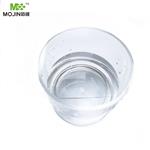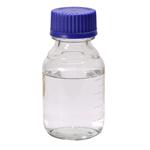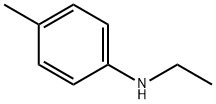- N-ETHYL-P-TOLUIDINE
-

- $0.00 / 25KG
-
2025-03-14
- CAS:622-57-1
- Min. Order: 1KG
- Purity: 99%
- Supply Ability: 50000KG/month
- N-ETHYL-P-TOLUIDINE
-

- $10.00 / 1KG
-
2025-02-19
- CAS:622-57-1
- Min. Order: 1KG
- Purity: 99%
- Supply Ability: 10 mt
- N-ETHYL-P-TOLUIDINE
-

- $10.00 / 1KG
-
2024-10-11
- CAS:622-57-1
- Min. Order: 1KG
- Purity: 95%
- Supply Ability: 10 ton
|
| | N-ETHYL-P-TOLUIDINE Basic information |
| Product Name: | N-ETHYL-P-TOLUIDINE | | Synonyms: | n-ethyltoluidines;N-ETHYL-4-METHYLANILINE;N-ETHYL-4-TOLUIDINE;N-ETHYL-P-TOLUIDINE;Ethylamino-p-methyl benzene;4-Ethylaminotoluol;N-ETHYL-PARA-TOLUIDINE;4-(Ethylamino)toluene | | CAS: | 622-57-1 | | MF: | C9H13N | | MW: | 135.21 | | EINECS: | 210-742-9 | | Product Categories: | | | Mol File: | 622-57-1.mol |  |
| | N-ETHYL-P-TOLUIDINE Chemical Properties |
| | N-ETHYL-P-TOLUIDINE Usage And Synthesis |
| General Description | A dark colored liquid with an aromatic odor. Insoluble in water and about the same density as water. Toxic by skin absorption and inhalation of vapors. Toxic fumes may evolve during combustion. | | Air & Water Reactions | Insoluble in water. | | Reactivity Profile | N-ETHYLTOLUIDINES are amines. Amines are chemical bases. They neutralize acids to form salts plus water. These acid-base reactions are exothermic. The amount of heat that is evolved per mole of amine in a neutralization is largely independent of the strength of the amine as a base. Amines may be incompatible with isocyanates, halogenated organics, peroxides, phenols (acidic), epoxides, anhydrides, and acid halides. Flammable gaseous hydrogen is generated by amines in combination with strong reducing agents, such as hydrides. Light sensitive | | Health Hazard | TOXIC; inhalation, ingestion or skin contact with material may cause severe injury or death. Contact with molten substance may cause severe burns to skin and eyes. Avoid any skin contact. Effects of contact or inhalation may be delayed. Fire may produce irritating, corrosive and/or toxic gases. Runoff from fire control or dilution water may be corrosive and/or toxic and cause pollution. | | Fire Hazard | Combustible material: may burn but does not ignite readily. When heated, vapors may form explosive mixtures with air: indoors, outdoors and sewers explosion hazards. Contact with metals may evolve flammable hydrogen gas. Containers may explode when heated. Runoff may pollute waterways. Substance may be transported in a molten form. |
| | N-ETHYL-P-TOLUIDINE Preparation Products And Raw materials |
|